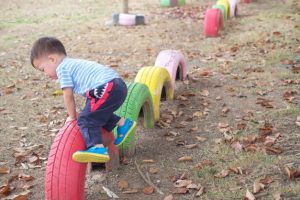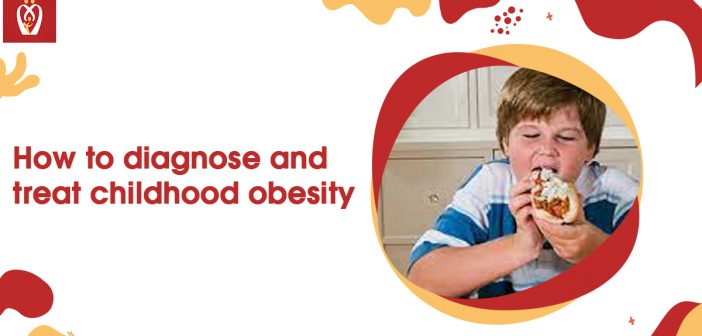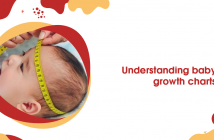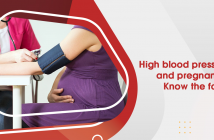Childhood obesity is a serious medical condition with serious long-term effects. Having a body mass index (BMI) greater than the average for a child’s age and height is considered a sign of childhood obesity.
Factors that lead to childhood obesity
Problems with diet and physical activity are the key contributors to childhood obesity. Other causes of childhood obesity may include genetic and hormonal factors as well. Obesity in children has numerous root causes and risk factors, some of which are listed below:

- Diet: Overconsumption of sweetened beverages, sweetened baked goods, sweetened candies, and desserts.
- Inactivity: Playing video games or watching television all day.
- Genetics: Obesity can be a genetic trait that runs in the family.
- Psychological issues: Personal, parental, and familial stress; comfort eating to deal with boredom or stress.
- Socioeconomic issues: A lack of resources and access to fresh and healthy foods or exercise facilities.
Diagnosis
During a routine checkup, the GP will calculate your child’s BMI and plot that information on a graph of BMI growth. Your child’s BMI can tell you whether or not they are overweight based on their age and height.
Your GP uses a growth chart to determine your child’s percentile, or how your child compares to other children of the same gender and age.
- Between the 85% and 94%, BMI range are overweight.
- BMI is 95 percent or higher are obese.
- BMI of 99 percent or above is severely obese.
The BMI calculation does not take into account muscle mass or a larger-than-average frame, so your GP also assesses your child’s growth.
Beyond the BMI and weight tracking on growth charts, the GP considers the following:
- Obesity and health issues related to weight, such as diabetes, in the family
- The dietary habits of your child
- Your kid’s level of exercise
- Various other medical issues
- Psychosocial background, such as episodes of despair, sleep problems, and unhappiness, as well as whether or not your child feels alone or is the victim of bullying are all important considerations.
Blood tests
Blood tests may be ordered by your child’s GP, which may include:
- Cholesterol testing
- An assessment of one’s blood sugar
- Additional blood tests to look for obesity-related hormonal imbalances or other disorders
Some of these tests necessitate that your child fasts for a period of time prior to taking them. A blood test may require your child to fast before the procedure, so make sure to confirm this with your GP.
Treatment for Childhood obesity
If your child has any additional medical disorders like diabetes or asthma, then treatment will depend on his or her age. Changing your child’s food choices and physical activity level are frequently part of treatment. Medication or weight-loss surgery may be part of the treatment plan in some cases.
Treatment aimed at children with BMI of 85th to 94th percentile
For children older than 2, it is suggested to start them on a weight-maintenance programme to help reduce their weight increase. This method permits the infant to grow in height without gaining weight, resulting in a lower BMI over time.
Treatments aimed at children with BMI of 95th of higher percentile
It is possible to urge children between the ages of 6 and 11 who are overweight or obese to change their eating habits so that they lose no more than 0.5 kg of weight per month. If an older child or teenager is obese or severely obese, a weight loss goal of two pounds per week may be suggested.
If you’re trying to keep your child’s weight stable or lose it, the same steps apply: The sort and amount of food your child consumes, as well as the amount of physical activity he or she gets, should both be addressed. You need to be willing to assist your child in making the necessary adjustments in order for them to succeed.
Healthy Eating
Buying groceries, cooking meals, and deciding where to eat are all responsibilities that fall to parents.
- Fruits and vegetables should take precedence. Reduce their intake of high-calorie, high-sugar convenience foods like cookies, crackers, and prepared meals when you go grocery shopping.
- Sweetened beverages should be limited. Fruit juice-based beverages fall under this category. To make up for their large caloric content, these drinks offer very little nourishment. Also, they may cause your youngster to feel too full to consume more nutritious foods.
- Stay away from fast-food restaurants. The vast majority of the choices on the menu are laden with fat and calories.
- Gather the family around the table for a supper. Make it an occasion for people to gather and share their tales and news. Consuming food while staring at a screen can lead to a lack of self-awareness of how much food you’ve consumed, which can lead to overeating.
- Serve the right amount of food. Adults require more nourishment than children do. If your child is still hungry after a tiny portion, they can ask for more. Even if it means leaving food on the plate, only let your child eat until they are satisfied.
Exercising
Physical activity is essential for anyone’s weight-loss goals, but it’s especially important for children. It burns calories, develops bone and muscle and improves sleep and alertness in youngsters, all of which contribute to overall health.

Adolescents who have good weight habits in place from a young age are more likely to stay that way as adults.
To help your youngster become more active:
- Limit the amount of time you spend watching television. Children above the age of two should have no more than two hours of screen time per day for leisure purposes, whether it be on a TV, computer, tablet, or smartphone. There should be no screen time for children under the age of two.
- Don’t put too much emphasis on working out. As a general rule, children should be physically active for at least an hour each day. It doesn’t have to be a planned fitness programme to get your child moving – the goal is to get them out of their seat. Playing games like hide-and-seek, tag, or jumping rope can help you burn calories and build muscle.
- Find out what your youngster enjoys doing and do it with him or her. The best way to collect leaves and rocks for your child’s collage is by taking them on a nature trek. Climbing walls and jungle gyms are great places to take a climbing-obsessed child. If your youngster enjoys reading, take him or her to the local library and get him or her a new book.







